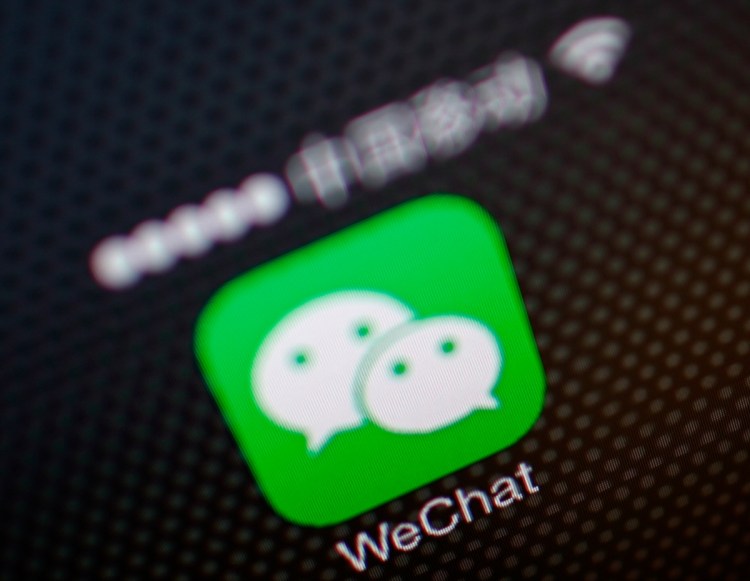She calls herself Cara. She looks like a model — large eyes, perfect skin — and teaches yoga for a living. She says her hometown is Changchun, a northeastern city not far from North Korea, and lives in Shanghai with her parents.
Cara is also a chatbot.
“She’ll be a little bit flirty,” Matthew Brennan, co-founder of WeChat consulting and research firm China Channel. “It doesn’t feel like a bot at all.”
Matthew discovered Cara through a friend who found her on Momo, a Chinese dating and live streaming app. Cara’s maker sent the bot’s WeChat name to users she matched with on Momo, before letting it loose on the Chinese messaging app.
“The whole idea is to get the hongbao,” Matthew explains, using the Chinese word for red envelope, the way to gift cash on WeChat. “As soon as the hongbao’s out, it’s collected immediately.”
Over the course of a few days, Cara chats up would-be suitors in a mixture of voice and text messages, eventually asking for a small favor: a transfer of US$27. It isn’t a lot — just enough to order something from Hong Kong, the bot says.
“I’ll treat you to a midnight snack in a few days,” she promises in an audio message, her voice soft and pouting. “And don’t get the wrong idea — I’m only asking you because we’re friends.”
Black-market bots for sale
Chatbots rocketed into the limelight last year, bolstered by the enthusiasm of Facebook and Microsoft, though the technology wasn’t mature yet.
In China, however, the response was more muted. While Facebook was busy pushing its new Messenger app — boasting when it hit 11,000 bots — Tencent, the maker of WeChat, quietly let millions of accounts develop AI-powered bots of their own, keeping a wary eye out for abuse. Accounts like Cara, for example, were shut down as Tencent wants to confine bots to customer service-related functions within brand accounts.
But unsanctioned bots run amok on the social network, often tactlessly spamming groups or artificially inflating a brand’s likes and follows. The Chinese tech firm clamped down last year on thousands of accounts, denouncing the use of external software to alter WeChat. Tencent did not reply to queries about its policies on bots.
Unlike WeChat’s “official” accounts, designed for commerce and media, these rogue bots hijack personal accounts. They can be purchased on Taobao, the country’s most popular online marketplace, for a couple of dollars or less. Some accounts are even “farmed” before they’re sold, which means they already have friends and have logged a certain amount of human-like activity, such as posting on Moments, WeChat’s newsfeed-like feature.
“If I grow a WeChat account to 3,000 to 5,000 friends, one ad on my Moments could be worth between US$14 to US$140,” explains Li Jiarui, a Javascript and WeChat bot developer based in Beijing. “It depends on the quality of your account.”
Jiarui doesn’t farm WeChat accounts, but she’s familiar with the industry. Account farming is driven by the needs of marketing and advertising agencies, as well as weishang, or “micro shops” run through personal WeChat accounts. Unlike brand accounts, personal accounts are easier to register and can participate in group chats. These shopkeepers often use their Moments to advertise all kinds of products, from imported baby powder to fake luxury handbags.
“Because they often get shut down, we can learn a lot from their experience,” says Jiarui.
Jiarui began developing WeChat bots about half a year ago to automate group management for her dance community on the messaging app. Her bot can automatically pull friends into groups and welcome new members, as well as hold basic conversations thanks to a Chinese natural language processing framework called Turing Robot.
In fact, her chatbot is so popular that Tencent once chose it as a beta tester for WeChat.
“They thought I was a serious WeChat addict,” she laughs. “They probably thought that I was on WeChat almost 24 hours a day, not doing much else. Because of my activity, they assumed I was a high-quality user.”
Jiarui says her bot, which has about 3,000 friends, receives more than 10,000 messages a day.
Other chatbots, like Micro Friend Assistant, are also designed to tackle WeChat’s clunky group management system. Micro Friend Assistant lets group administrators set responses to keywords, automatically upload shared files to cloud storage, or even track and analyze group activity. But, like Cara, it too was shut down.
Where there’s a will, there’s a way
“This Chinese New Year, I tested out a hongbao bot and then I was banned for like a week or so,” says an employee at a chatbot company, who requested anonymity. He forgot to program the bot to not be the first one to grab the red envelopes — a total bot giveaway. Adding too many friends in a short amount of time can also raise a red flag.
Tencent is understandably opaque about its rules for catching bots to keep developers on their toes. But Jiarui has learned a few tricks from the app’s shopkeepers, such as using mobile data instead of Wi-Fi to send messages, as well as tying a bank card to the bot’s account.
“Do your best to mimic a real account,” she advises. Chatbots should follow brand accounts, have a profile picture, post on Moments, and both proactively and passively make friends on the app. “Ideally have your friends add you first. And try to have these friends comment on the content in your Moments,” she says.
This article originally appeared on Tech in Asia and blog.chatbot.com. Used with permission. Follow Tech in Asia on the web and Facebook for the latest Asian tech insights, jobs, and events.
VentureBeat's mission is to be a digital town square for technical decision-makers to gain knowledge about transformative enterprise technology and transact. Learn More

